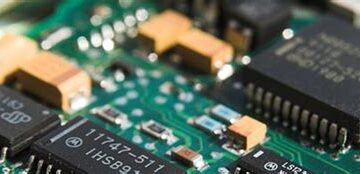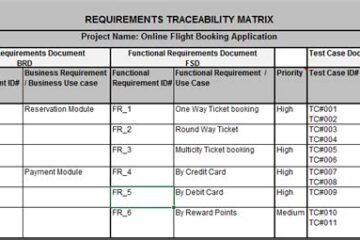Introduction to RayMing and PCB Substrates
RayMing, a leading manufacturer of high-quality printed circuit board (PCB) substrates, has recently announced its involvement in the development of the world’s smallest Bluetooth module. By providing the PCB substrate for this groundbreaking technology, RayMing has solidified its position as a key player in the electronics industry.
What are PCB Substrates?
PCB substrates are the foundation upon which electronic components are mounted and connected to create a functional circuit board. The substrate material plays a crucial role in determining the performance, reliability, and durability of the final product. Some common PCB substrate materials include:
- FR-4: A composite material made of fiberglass and epoxy resin, known for its excellent mechanical and electrical properties.
- Polyimide: A high-performance polymer that offers superior thermal stability and flexibility, ideal for flexible PCBs.
- Ceramic: Used in high-frequency and high-power applications due to its excellent thermal conductivity and low dielectric loss.
| Substrate Material | Characteristics | Applications |
|---|---|---|
| FR-4 | Good mechanical and electrical properties | General-purpose PCBs, consumer electronics |
| Polyimide | High thermal stability, flexibility | Flexible PCBs, wearable devices, medical devices |
| Ceramic | Excellent thermal conductivity, low dielectric loss | High-frequency and high-power applications |
RayMing’s Expertise in PCB Substrates
RayMing has been at the forefront of PCB substrate manufacturing for over two decades. The company’s commitment to research and development, coupled with its state-of-the-art production facilities, has enabled it to consistently deliver high-quality substrates that meet the demanding requirements of various industries, including:
- Consumer electronics
- Automotive
- Aerospace
- Medical devices
- Industrial automation
RayMing’s technical expertise and stringent quality control processes have earned the trust of numerous global clients, making it a preferred supplier for PCB substrates worldwide.
The World’s Smallest Bluetooth Module
Overview of the Bluetooth Module
The world’s smallest Bluetooth module, developed by a leading technology company, is a testament to the advancements in miniaturization and wireless communication. This module, measuring just 2mm x 2mm, integrates all the necessary components for Bluetooth connectivity, including:
- RF transceiver
- Baseband processor
- Memory
- Antenna
- Passive components
Despite its compact size, the module offers full Bluetooth 5.2 functionality, enabling low-power, high-speed wireless communication between devices.
RayMing’s Role in the Development
RayMing was selected as the PCB substrate supplier for this groundbreaking Bluetooth module due to its proven track record in delivering high-quality, customized substrates for miniaturized applications. The company worked closely with the module developer to design and manufacture a PCB substrate that could accommodate the module’s ultra-compact form factor while maintaining optimal performance.
Key challenges in developing the PCB substrate for the world’s smallest Bluetooth module included:
- Miniaturization: Ensuring precise dimensions and tight tolerances to fit all components within the 2mm x 2mm footprint.
- Signal integrity: Maintaining high signal integrity and minimizing electromagnetic interference (EMI) in such a compact design.
- Reliability: Ensuring the substrate’s structural integrity and durability despite its small size.
RayMing’s advanced manufacturing capabilities, including high-precision laser drilling and fine-line patterning, were instrumental in overcoming these challenges and delivering a PCB substrate that met the module’s stringent requirements.
Impact on the Electronics Industry
The successful development of the world’s smallest Bluetooth module has far-reaching implications for the electronics industry. This breakthrough technology enables the creation of even smaller, more compact devices, such as:
- Wearable electronics
- Implantable medical devices
- Internet of Things (IoT) sensors
- Miniaturized wireless audio devices
By pushing the boundaries of miniaturization, this Bluetooth module opens up new possibilities for product design and functionality, driving innovation across various sectors.
RayMing’s Commitment to Innovation
Investing in Research and Development
RayMing’s success in providing the PCB substrate for the world’s smallest Bluetooth module is a result of its ongoing commitment to research and development (R&D). The company invests heavily in R&D to stay at the forefront of PCB substrate technology, constantly exploring new materials, processes, and designs to meet the evolving needs of its clients.
Some of RayMing’s key R&D focus areas include:
- Advanced materials: Investigating novel substrate materials with improved thermal, mechanical, and electrical properties.
- Miniaturization techniques: Developing new methods for high-density interconnect (HDI) PCBs and fine-line patterning to enable further miniaturization.
- Embedded components: Exploring techniques for embedding active and passive components within the PCB substrate to enhance functionality and reduce overall device size.
By continuously pushing the boundaries of PCB substrate technology, RayMing positions itself as a leader in the industry, ready to tackle the challenges of tomorrow’s electronic devices.
Collaborating with Industry Partners
In addition to its internal R&D efforts, RayMing actively collaborates with industry partners, including technology companies, research institutions, and universities, to drive innovation in PCB substrate technology. These collaborations allow RayMing to:
- Access cutting-edge research and expertise
- Participate in joint development projects
- Validate new technologies and processes
- Expand its knowledge base and capabilities
Through these strategic partnerships, RayMing stays at the forefront of PCB substrate innovation, ensuring its clients have access to the latest advancements in the field.

Conclusion
RayMing’s involvement in the development of the world’s smallest Bluetooth module highlights the company’s expertise in PCB substrate manufacturing and its commitment to driving innovation in the electronics industry. By providing a high-quality, customized PCB substrate for this groundbreaking technology, RayMing has demonstrated its ability to meet the challenging demands of miniaturization and high-performance wireless communication.
As the electronics industry continues to evolve, with a growing emphasis on smaller, smarter, and more connected devices, RayMing is well-positioned to support its clients in developing the next generation of innovative products. Through its ongoing investment in research and development, collaborations with industry partners, and dedication to quality and customer service, RayMing remains a trusted supplier of PCB substrates for the world’s most advanced electronic devices.
Frequently Asked Questions (FAQ)
-
What is a PCB substrate, and why is it important?
A PCB substrate is the foundation material upon which electronic components are mounted and interconnected to create a functional printed circuit board. The substrate material plays a crucial role in determining the performance, reliability, and durability of the final product. -
What are some common PCB substrate materials, and how do they differ?
Common PCB substrate materials include FR-4, polyimide, and ceramic. FR-4 is a composite material made of fiberglass and epoxy resin, known for its good mechanical and electrical properties. Polyimide offers high thermal stability and flexibility, making it ideal for flexible PCBs. Ceramic substrates are used in high-frequency and high-power applications due to their excellent thermal conductivity and low dielectric loss. -
How did RayMing contribute to the development of the world’s smallest Bluetooth module?
RayMing was selected as the PCB substrate supplier for the world’s smallest Bluetooth module due to its expertise in delivering high-quality, customized substrates for miniaturized applications. The company worked closely with the module developer to design and manufacture a PCB substrate that could accommodate the module’s ultra-compact form factor while maintaining optimal performance. -
What challenges did RayMing face in developing the PCB substrate for the Bluetooth module?
Key challenges in developing the PCB substrate for the world’s smallest Bluetooth module included miniaturization, ensuring precise dimensions and tight tolerances; maintaining high signal integrity and minimizing electromagnetic interference; and ensuring the substrate’s structural integrity and durability despite its small size. -
How does RayMing stay at the forefront of PCB substrate innovation?
RayMing stays at the forefront of PCB substrate innovation through its ongoing investment in research and development, focusing on advanced materials, miniaturization techniques, and embedded components. The company also actively collaborates with industry partners, including technology companies, research institutions, and universities, to drive innovation and expand its knowledge base and capabilities.



0 Comments